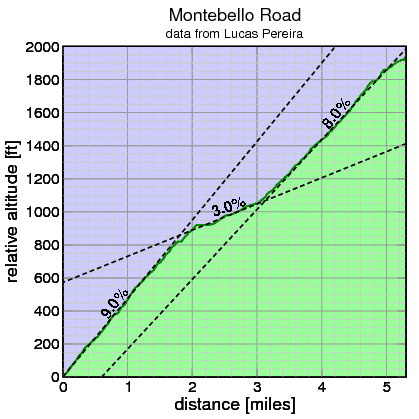Low-Key Hillclimbs begin!

As we approach October, my anxiety level always rises. The Low-Key Hillclimbs loom.
But somehow it always comes together, and this past Saturday was no different. We had perfect conditions and essentially no conflict as our group of merry climbers tackled the traditional series-opener, Montebello Road.
It was good to see a lot of returning faces, and a good number of them were looking noticably leaner. It's great to see when people come in, lighter and fitter, and take minutes off their previous best times. It's also great seeing how much the junior riders improve, which they always do.

I mostly milled around during registration, answering questions while a fantastic group of volunteers signed in riders. Then we organized a neutral roll-out to the base of the climb, started the timers with a honk of the car horn, and drove up the hill to the summit for timing.
Timing went exceptionally well. Howard is a pro with his stop-watch. Others recorded rider numbers and the all-important rider-time combos. Riders arrive too quickly to get numbers and times for every one, but by having a dedicated list of times, a dedicated list of numbers, and a list of occasional time-number pairs, it's fairly easy to construct a virtually complete set of results even if a few numbers or times are missing. Without the combos, if the times and numbers differ in length by one, where does the gap go to bring them into alignment?
But that's not enough. My goal for the day was to get rider numbers a second time, after they'd rolled past the finish. If necessary, I checked the sticker we'd attached to their stems to which they were to have referred prior to shouting it out at the finish. or finishes of small packs this role is very useful, because at the finish line it can be difficult to discrimate the near-simultaneous shouts. And sometimes riders simply forget all about the number shouting thing, even though we verbally request it as they approach. When the muscles have sapped all avaible oxygen, leaving none left for the brain, cognition isn't at its snappy best.
With all of this duplication we add even more: a photographer photographs each rider crossing the finish. Photographing the stop watch synchronizes EXIF metadata in the photo with ride time. We could do full results this way, but it would be very time consuming. But it's critical for untangling very close finishes, or for resolving issues when riders misread their number stickers and I don't pick up the error in my role as sweeper.
Then when I get home with all of these reg and results sheets, I make a spreadsheet with a list of numbers and times and run it through my Perl-based scoring code. That handles all of the bookkeeping. If I have duplicate numbers, or have numbers associated with riders who hadn't registered, it lets me know.
If there's still issues, I check the photos posted on-line by the finish line volunteer and/or check the rider jersey and bike description written next to the rider's name at check-in. I've also got rider mass to help identify photos if the user voluntarily provided it for my "fun" ranking on mass-adjusted climbing rate (VAM multiplied by mass, a crude measure of raw watts).
After results are done, I make a list of web sites of photos volunteer photographers have uploaded (typically there's several) with credits, I select a photo to go at the top of the results page for the week and fill in a caption and link in my data file, then finally I write a little race story. Then I need to reset the "RSVP" page to allow riders to register for the following week's climb and manually shut off the "registration full" flag if I'd set it the previous week. I then run the code which presses this all into HTML and uploads it to my site.
Tipically there's errors: riders with the wrong team, spelling errors, even incorrect numbers somehow entered despite the checks in my code. But I can make these changes extremely rapidly, typically typing a few characters in an appropriate file then re-running my script.
Next week: Quimby Road. The fun begins again. This week I have an excellent volunteer coordinator to run the main show, so I will probably run it as part of my preparation for the CIM in December.


Comments